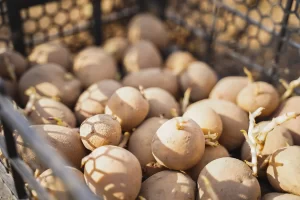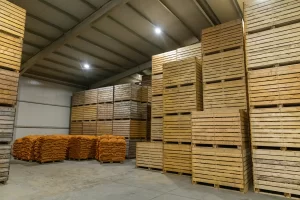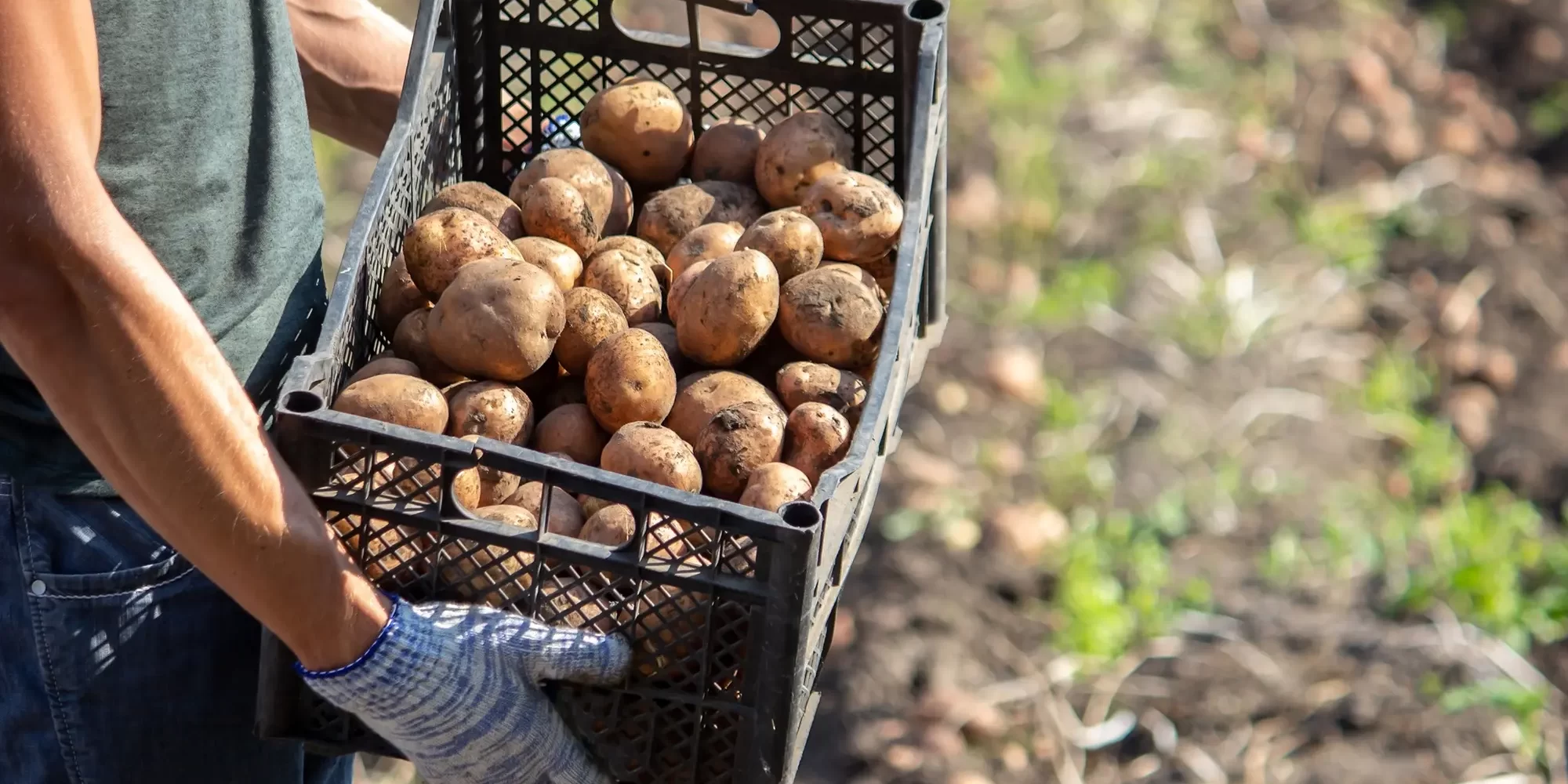Potato storage is a critical aspect of post-harvest management, crucial for maintaining the quality and extending the shelf life of this staple crop.
However, storage presents several challenges, primarily due to factors that can lead to spoilage, including microbial growth, humidity, and temperature fluctuations.
Addressing these issues effectively is essential to prevent losses and ensure the potatoes reach the market in optimal condition.
Common Challenges in Potato Storage
 Storing potatoes for extended periods requires careful management of environmental conditions to prevent decay and spoilage. Key challenges include:
Storing potatoes for extended periods requires careful management of environmental conditions to prevent decay and spoilage. Key challenges include:
- Sprouting: Potatoes naturally begin to sprout over time, which reduces their quality and marketability.
- Diseases: Fungal and bacterial infections, such as late blight or soft rot, can devastate stored potatoes.
- Shrinkage and Weight Loss: Due to respiration and moisture loss, stored potatoes can shrink and lose weight, affecting their market value.
EPA Approval of Chlorine Dioxide for Potato Treatment
Recognising the need for effective solutions to these storage challenges, the United States Environmental Protection Agency (EPA) has approved the use of Chlorine Dioxide (ClO2) for treating potatoes in storage. This approval marks a significant advancement in agricultural practices, allowing for the use of ClO2 as a safe and effective method to manage environmental factors and reduce spoilage risks.
Benefits of Chlorine Dioxide in Potato Storage
 Chlorine Dioxide is a potent oxidising agent known for its ability to kill bacteria, viruses, and fungi, making it an excellent choice for potato storage applications. The use of ClO2 in potato storage can lead to several benefits:
Chlorine Dioxide is a potent oxidising agent known for its ability to kill bacteria, viruses, and fungi, making it an excellent choice for potato storage applications. The use of ClO2 in potato storage can lead to several benefits:
- Reduction in Microbial Spoilage: ClO2 effectively controls microbial growth on potatoes, reducing the incidence of diseases that can cause spoilage during storage.
- Sprout Suppression: By controlling the microbial environment, ClO2 can help to inhibit the sprouting process, thereby extending the shelf life of potatoes.
- Humidity and Ethylene Control: ClO2 helps maintain optimal humidity levels and reduce ethylene production, a hormone that accelerates ripening and aging processes in plants.
Implementing Chlorine Dioxide in Potato Storage
Integrating Chlorine Dioxide into potato storage involves setting up appropriate dosing systems to ensure the correct concentration and exposure. Scotmas provides tailored ClO2 solutions designed to be easy to integrate and operate within existing storage facilities. By adopting ClO2, potato storage facilities can enhance their operational efficiency and reduce losses due to spoilage.
A Leap Forward in Potato Storage
The EPA’s approval of Chlorine Dioxide for use in potato storage is a testament to its safety and effectiveness. For potato producers and storage facilities, adopting ClO2 technology represents a proactive step towards overcoming storage challenges and ensuring high-quality produce. Scotmas is at the forefront of delivering innovative ClO2 solutions, helping the agricultural sector meet its storage needs efficiently. Contact us for more information on integrating Chlorine Dioxide into your potato storage management practices.






